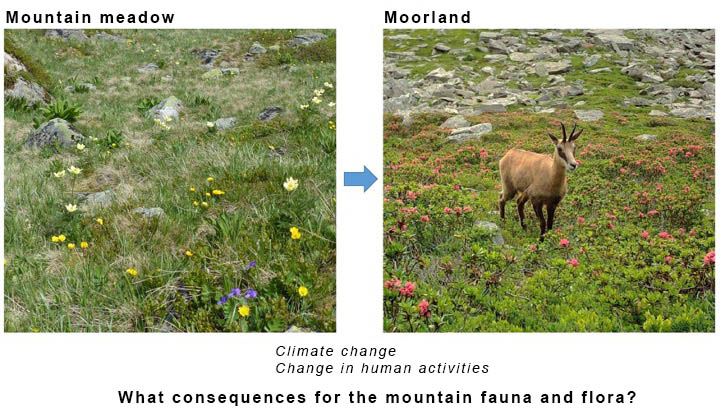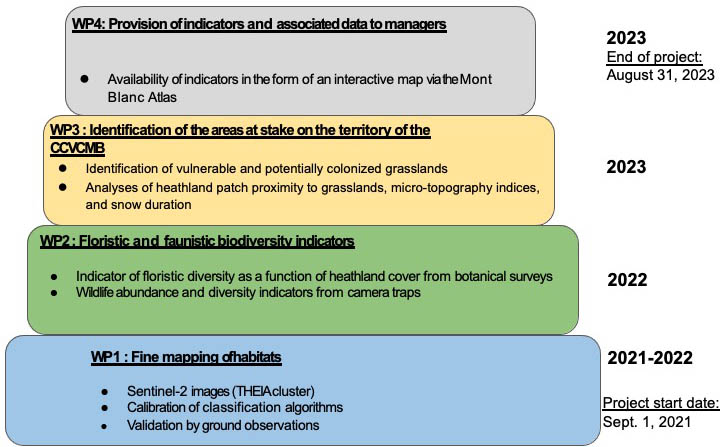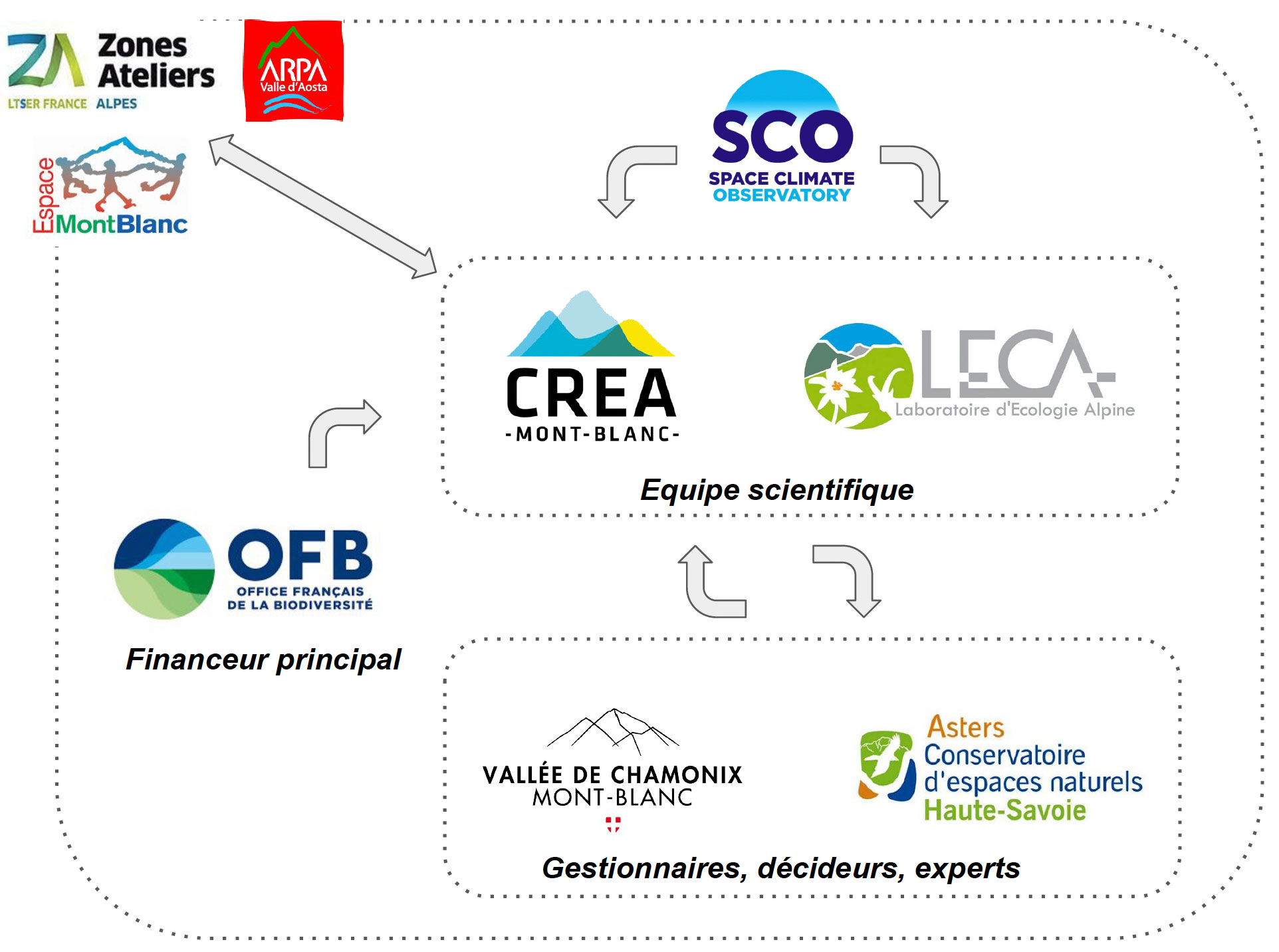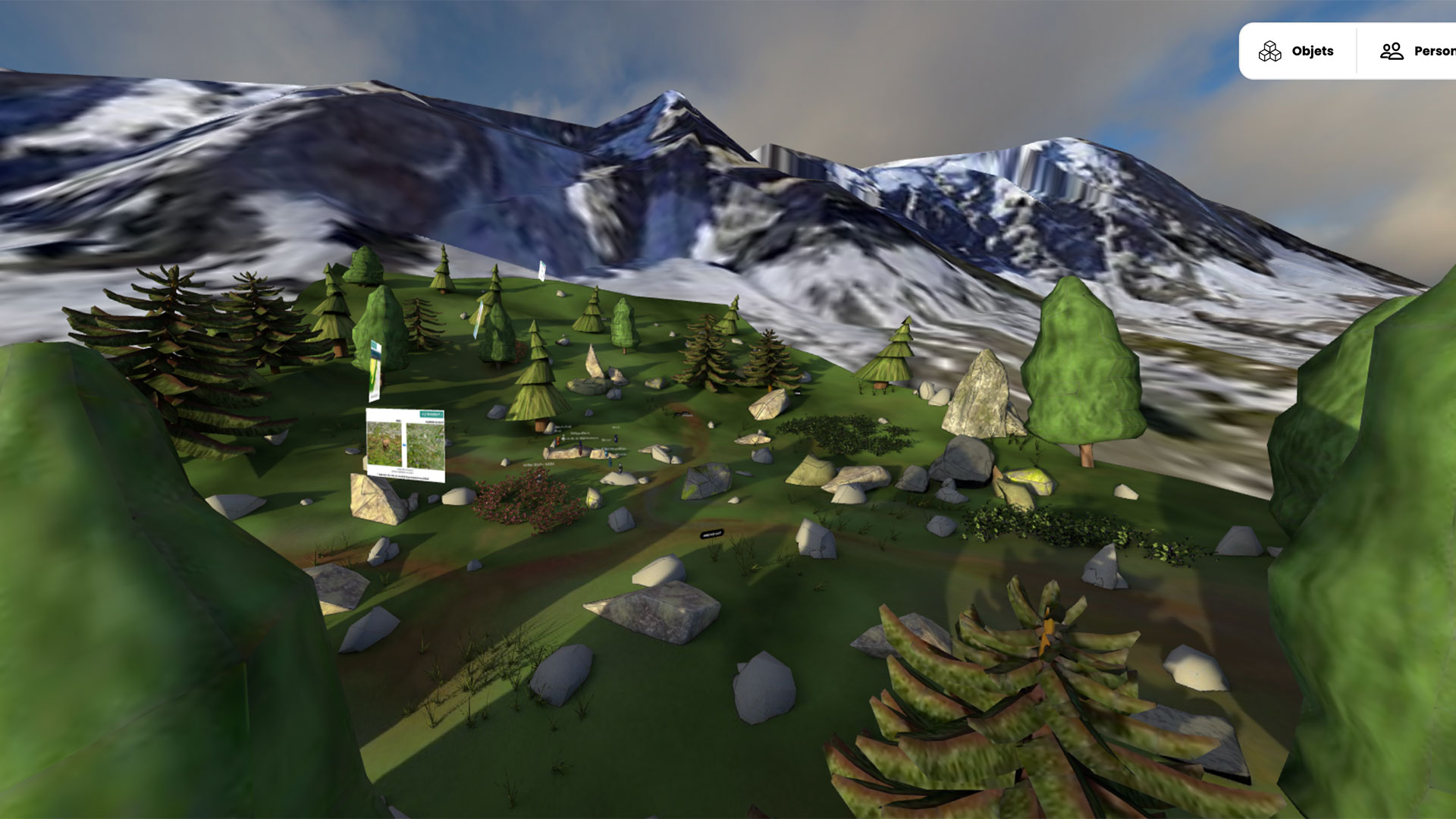Welcome to the Alps with Orion
What an astonishing visio that of the Orion team: 12 avatars following their guide - a red fox - in a virtual part of the Alps! From one sector to the other of the "Room Lande", the fox, alias Brad Carlson, Orion project leader, reminds the context as well as the objectives and consults his partners to refine the outlines of the project.
Stop 1: the landscape changes
In recent years, alpine meadows have been invaded by moorland, a vegetation composed of small shrubs up to 50 cm high such as rhododendron or juniper. This rapid expansion is a major but understudied response of the environment to global changes (climate and human activities), particularly important in the mountains. The result of this colonization is an obvious impoverishment of alpine biodiversity: the dozens of plant species initially present in a meadow are reduced to a handful when the heathland has properly devoured it... In fact, we suspect very likely consequences for animals, especially for herbivores whose feeding habits and a fortiori their movements are disturbed.

© Crea Mont-Blanc
Stop 2: a lack of operational tools
While camera traps can be used to monitor the use of certain sites by wildlife, an overall view is needed to quantify and monitor changes in vegetation over time, which is what satellite images allow. However, the existing maps and products are not adapted to the local scale of the project or are not sufficiently reliable for fine monitoring: it is necessary to be able to distinguish between moorland and grassland, water and ice, etc., and if possible to classify the different types of moorland.
The first step will therefore be to establish a fine cartography of habitats, based mainly on Sentinel-2 images acquired every 5 to 10 days at 10 meters of resolution. The project hopes that this product can be replicated in the coming years in other mountain areas.
Stop 3: objectives and planning

Stop 4: the project team

Stop 5: roles and expectations
In this space of the Moorland Room, all partners coordinated on what each could do and/or provide. In terms of needs, the majority were:
- To popularize the results and provide them in GIS format so that they can be directly used by decision-makers;
- The importance of focusing on priority areas;
- Integrate "predictive" layers on snow cover and temperature so that the habitat mapping can be used as a basis for anticipating probable changes shifts in alpine landscapes in response to climate change.
As the representative of the neighboring Aosta Valley (Italy), where a project on pastoral resources with similar regional partners is taking place, points out, it is imperative that all partners exchange extensively throughout the project.
Stop 6: synergy with other projects
3 projects could offer a nice synergy with Orion:
- ANR TOP: study of the trajectories of livestock systems that depend on mountain pastures, and the reasons for changes in pastoral activity.
- CTENS (Territory Contract for Sensitive Natural Spaces): currently being set up for the community of communes of Chamonix, co-financing planned with Orion.
- Adapt MB: interest of the ORION project for the Espace Mont-Blanc, especially on biodiversity and habitat indicators.
The foundations have been laid, see you in a few months to discover the habitat map!



